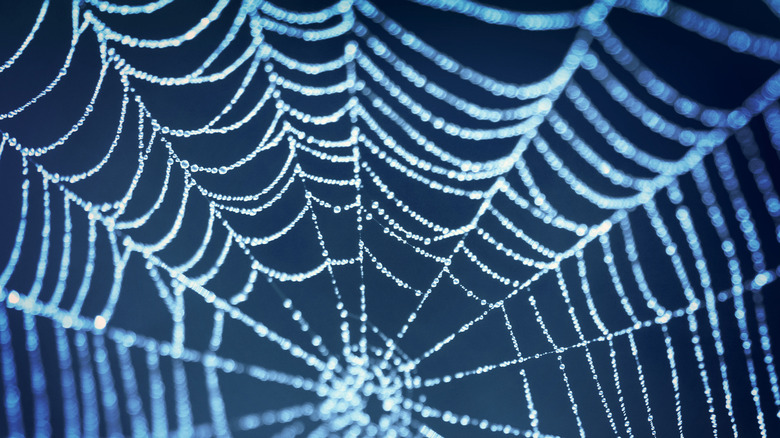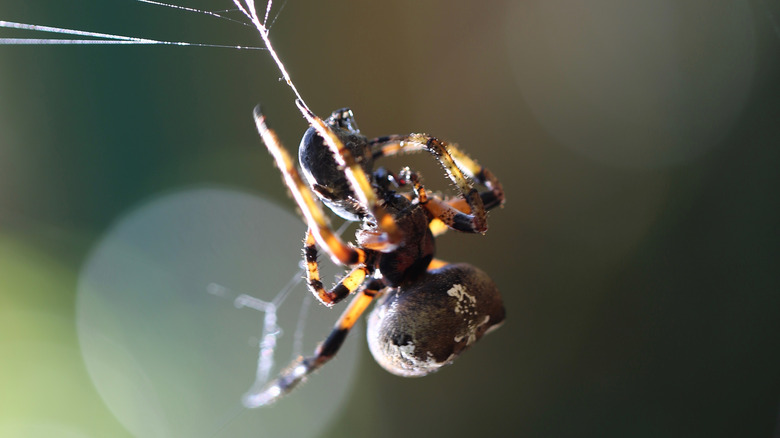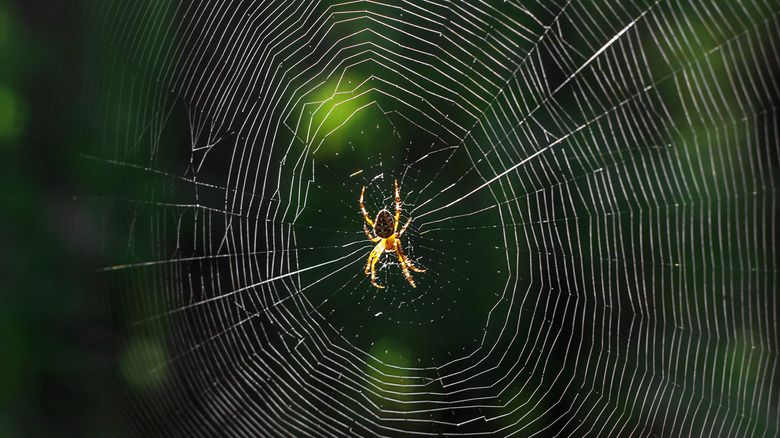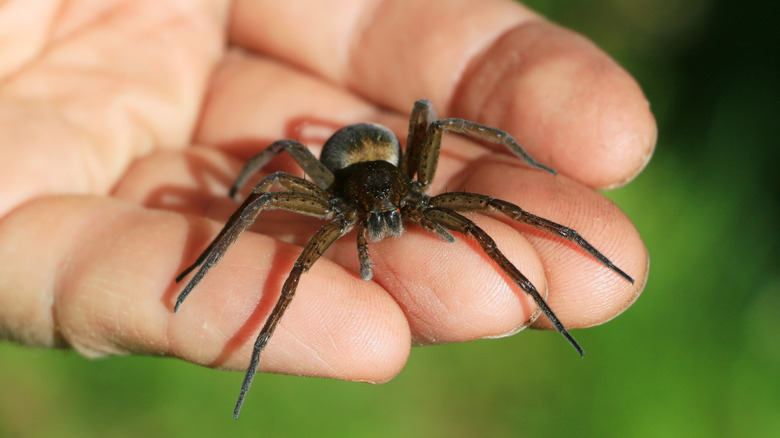Spider Webs Once Had An Important Medical Purpose
Back in the 1st century A.D. when the Roman empire ruled, people were just starting to use books (via Business Insider). Plumbing had not been developed, people often hung out in unsanitary bath houses, and antibiotics wouldn't be developed for hundreds of years. People these days would probably never survive life in Ancient Rome. Needless to say, it wasn't a good time to get wounded, and warriors and gladiators of the time often didn't make it out alive when they were injured in combat (although one of the most common forms of death during that time was childbirth among women, per the Australian and New Zealand Journal of Obstetrics and Gynecology).
According to Medical News Today, medical care at this time was limited, although surgeons often used scalpels and forceps to pry things out of the body during wartime after sterilizing them in boiling water. Natural remedies like unwashed wool, boiled liver, and cabbage were used as antiseptics on sores (via Medical News Today). Per Pennsylvania State University, medics at the time even sometimes used spider webs to dress a wound, which seems to have inspired scientists in our time to revisit this natural remedy. Add it to the list of reasons you shouldn't kill spiders in your house.
'Strong as steel, light as a feather'
A spider web is magnificently intricate and surprisingly strong — one type of Australian spider can even catch bats and birds in its web (via The Telegraph). Humans have been quick to utilize the strong properties of spider silk. The indigenous people of the Solomon Islands use spider silk as a fishing line to catch needlefish because this species of fish has such a small mouth that only something as fine as silk can be threaded through it (via BBC News). Scarves, jackets, and gloves have also been woven with spider silk, which is "strong as steel and as light as a feather," according to an article on JSTOR.
Of course, humans have been looking for ways to engineer spider silk for its strong properties for hundreds of years. In the early 1900s, scientists tried to industrialize the web-spinning process of the giant orb spider, which spins a miraculous web. But the spider could not be contained to a small space successfully and the attempt to commercialize its spinning to replace spinsters flopped.
What about 'webiccillin'?
People haven't given up hope that spider silk could serve human purposes. According to ArsTechnica, people in the Carpathian Mountains traditionally use spider silk to wrap wounds and there have been reports of doctors protecting rotten teeth in silk cocoons to heal them. This has led many to believe that spider silk contains some antibiotic properties, and could be used as a form of "webiccillin."
Within the past decade, many scientists have been trying to determine to what extent, if any, spider silk could be used as an antibiotic. Anecdotal evidence showed that spiders often repelled bacteria from their webs, leading people to believe that perhaps their silk had antimicrobial properties, according to Science Direct. With close to 50,000 spider species and many spiders being able to produce up to seven different kinds of silk, it's not an unreasonable hypothesis that perhaps silk could be used to care for wounds (via National Geographic).
The human-spider collab
In a recent study, scientists disproved the idea that spider silk had antimicrobial properties, producing "the strongest case yet against spider silk's rumored healing properties," according to ArsTechnica. Writing in iScience, researchers said that any positive indications that spider silk could be used as an antibiotic before may have been caused by contaminated test tubes. Tests of seven different spider species did not show any evidence that it could be used as an antibiotic.
However, spider silk may still have a place in human medicine with a little help from the human hand. In 2017, researchers developed a synthetic spider silk infused with antibiotics that can be used to close wounds and reduce infection risk, according to Science Alert. Engineers working on the project said they were inspired by the Ancient Roman use of spider webs to dress wounds, and basically evolved their practices of mixing honey and vinegar with spider silk to disinfect it with modern antibiotics (via Science Alert). Humans already face a fatal risk if spiders didn't exist, but perhaps the beneficial ways in which we coexist with spiders are just starting to be unraveled.



